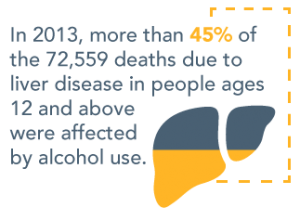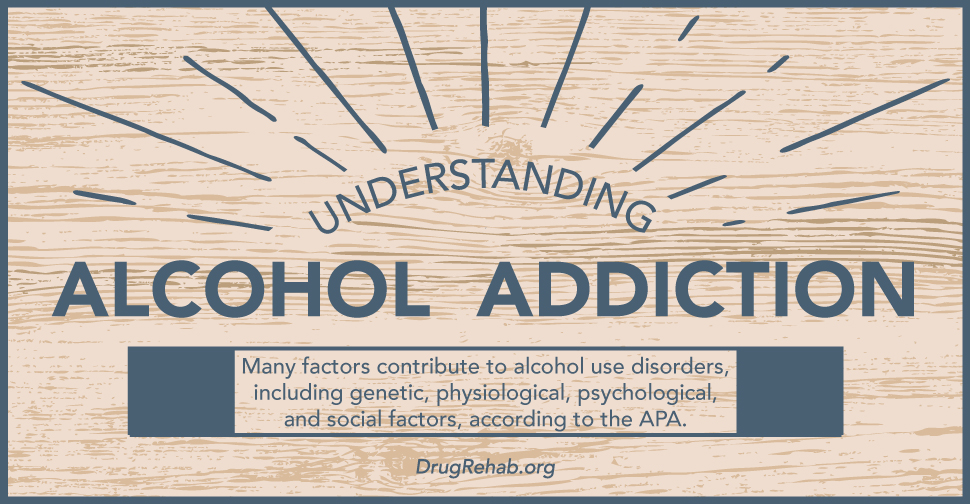Defining Alcohol Use Disorders
Alcohol use disorders are, “medical conditions that doctors diagnose when a patient’s drinking causes distress or harm,” as defined by the National Institute on Alcohol Abuse and Alcoholism (NIAAA). In understanding alcohol use disorders, it may be helpful to see the use of alcohol on a range from moderate use all the way to alcohol dependence, according to the American Psychological Association (APA). The following stages of alcohol use are helpful in identifying the level of alcohol use and characteristics of alcohol use disorders:
- Moderate use: this ranges from 1 drink to no more than 2 drinks a day. For most adults, moderate alcohol use is not harmful, the APA states.
- Alcohol abuse: characterized by patterns of alcohol use which have serious and recurring consequences for the person affected.
- Alcohol dependence: a person with this disorder no longer has control of his or her alcohol use. In other words, once a person dependent on alcohol starts drinking, he or she is unable to stop.

The NIAAA adds to this list: binge drinking, which may occur after four drinks for women and five drinks for men consumed in about 2 hours or less, and heavy drinking, which may be defined as 5 or more drinks consumed in one occasion, at least once in 30 days. For someone affected by alcohol abuse, negative results may include failure to complete obligations, such as those for family, school, or work. The effects of alcohol abuse may affect a person’s relationships, or may even cause him or her to get into situations which have legal repercussions (such as driving under the influence).
Once a person becomes dependent on alcohol, he or she may not be able to stop drinking after starting. A person who has progressed to alcohol dependence may also build a tolerance to the effects of alcohol, which means he or she will no longer feel the desired effects of drinking, and will continue use of it to try to produce the same euphoria. Also, someone experiencing alcohol dependence may suffer severe withdrawal symptoms if alcohol use is stopped, including:
- Hallucinations and convulsions
- Irritability
- Nausea
- Restlessness
- Tremors
- Sweating
Causes Of Alcohol Use Disorders
Many factors contribute to alcohol use disorders, including genetic, physiological, psychological, and social factors, according to the APA. In some people, psychological traits such as impulsiveness, low self-esteem, and an inherent need for approval foster the recurrent use of alcohol. Other factors may include social and environmental influences; the ready availability of alcohol may play a key role in causing alcohol use disorders. Alcohol use disorders do not discriminate; underage drinking may begin as early as 12 years old, says the NIAA, and a large percentage of college students from ages 18 to 24 may be heavily affected by some form of alcohol use disorder. Men also tend to report heavy drinking more than do women.

Health Effects Of Alcohol Use Disorders
 Alcohol use disorders have varied and serious effects on health, the scope of which may affect any number of people who are suffering from the disorders. Perhaps at the forefront of health problems associated with alcohol use disorders is liver disease and liver issues. In 2013, more than 45 percent of the 72,559 deaths due to liver disease in people ages 12 and above were affected by alcohol use. The number of cirrhosis deaths for which alcohol use is a contributing factor is significant: 48 percent of all cirrhosis deaths in 2011 were alcohol related, the NIAAA reports. Further, persons affected by alcohol abuse may see an increased risk for certain cancers, including: mouth, esophagus, pharynx, larynx, liver, and breast.
Alcohol use disorders have varied and serious effects on health, the scope of which may affect any number of people who are suffering from the disorders. Perhaps at the forefront of health problems associated with alcohol use disorders is liver disease and liver issues. In 2013, more than 45 percent of the 72,559 deaths due to liver disease in people ages 12 and above were affected by alcohol use. The number of cirrhosis deaths for which alcohol use is a contributing factor is significant: 48 percent of all cirrhosis deaths in 2011 were alcohol related, the NIAAA reports. Further, persons affected by alcohol abuse may see an increased risk for certain cancers, including: mouth, esophagus, pharynx, larynx, liver, and breast.
Understanding Alcohol Use Disorders: Who Is At Risk, And What Can Be Done?
As the Substance Abuse and Mental Health Services Administration (SAMHSA) explains, alcohol use disorders affect a large demographic in the United States alone. From a survey conducted by SAMHSA in 2014 called National Survey on Drug Use and Health, it was found that 139.7 million people ages 12 and older in the United States were affected by the use of alcohol, which comprised a large range of racial backgrounds: non-hispanic whites, African Americans, American Indian or Alaskan Natives, Native Hawaiian or Other Pacific Islanders, Asians, Hispanics, and mixed races including two or more races. Of this same percentage of people affected by alcohol use disorders, only 8.9 percent received treatment for their disorders, according to SAMHSA.
Receiving Help Can Change Your Life
 Alcohol use disorder is a problem which affects so many. Maybe you can think of someone right now who is suffering in the grip of an addiction to alcohol. Teens, college-aged people, men, women, and all different races are affected by this epidemic. We may not have beaten it, but we can do our part to treat alcohol use disorder, to help those affected by it get the proper treatment. If you are looking for a way to help someone close to you overcome his alcohol disorder, to stop his or her binge drinking issue, contact us today at DrugRehab.org to hear more about what you can do to help.
Alcohol use disorder is a problem which affects so many. Maybe you can think of someone right now who is suffering in the grip of an addiction to alcohol. Teens, college-aged people, men, women, and all different races are affected by this epidemic. We may not have beaten it, but we can do our part to treat alcohol use disorder, to help those affected by it get the proper treatment. If you are looking for a way to help someone close to you overcome his alcohol disorder, to stop his or her binge drinking issue, contact us today at DrugRehab.org to hear more about what you can do to help.
Sources
American Psychological Association– Understanding Alcohol Use Disorders And Their Treatment
National Institute On Alcohol Abuse And Alcoholism– Alcohol Facts and Statistics
Substance Abuse And Mental Health Services Administration– Alcohol


